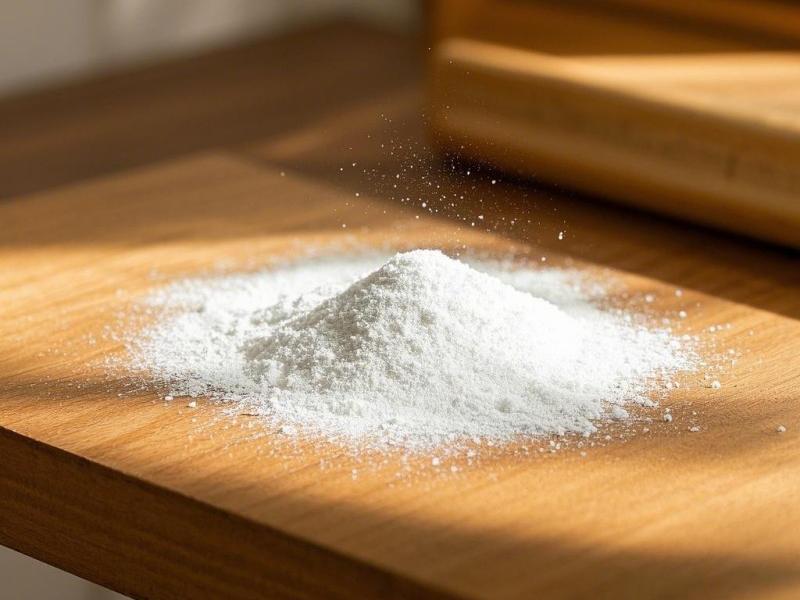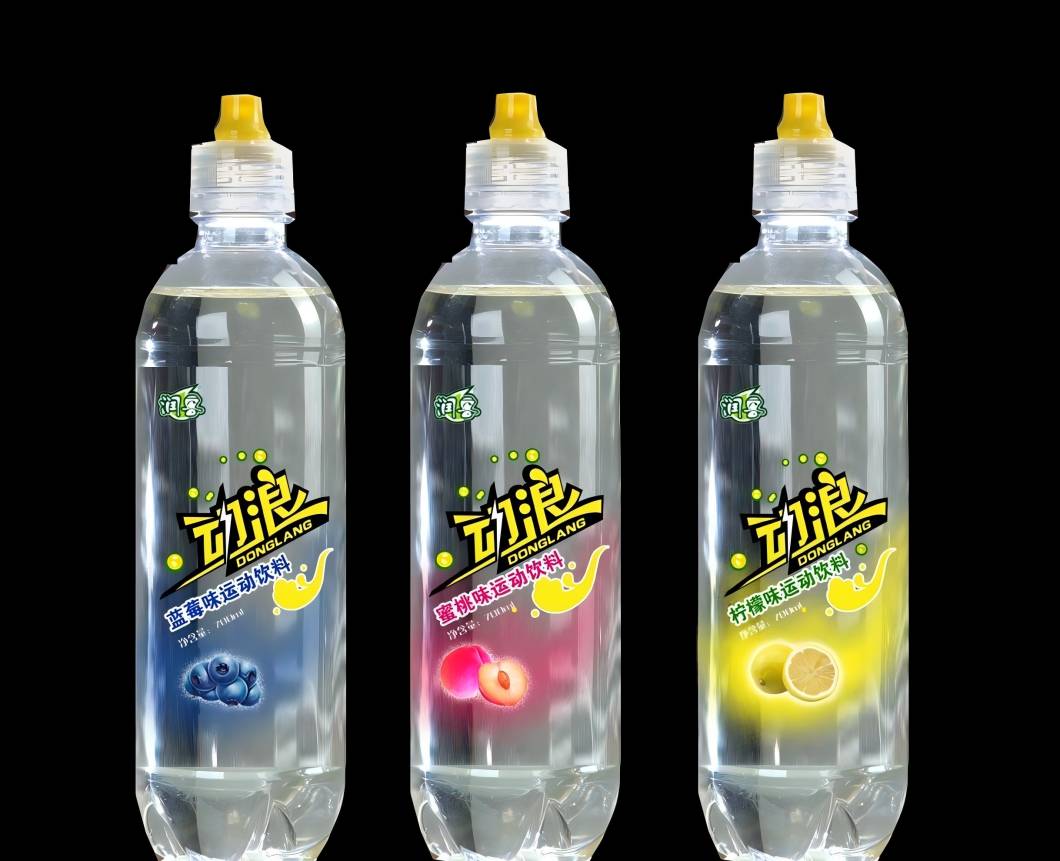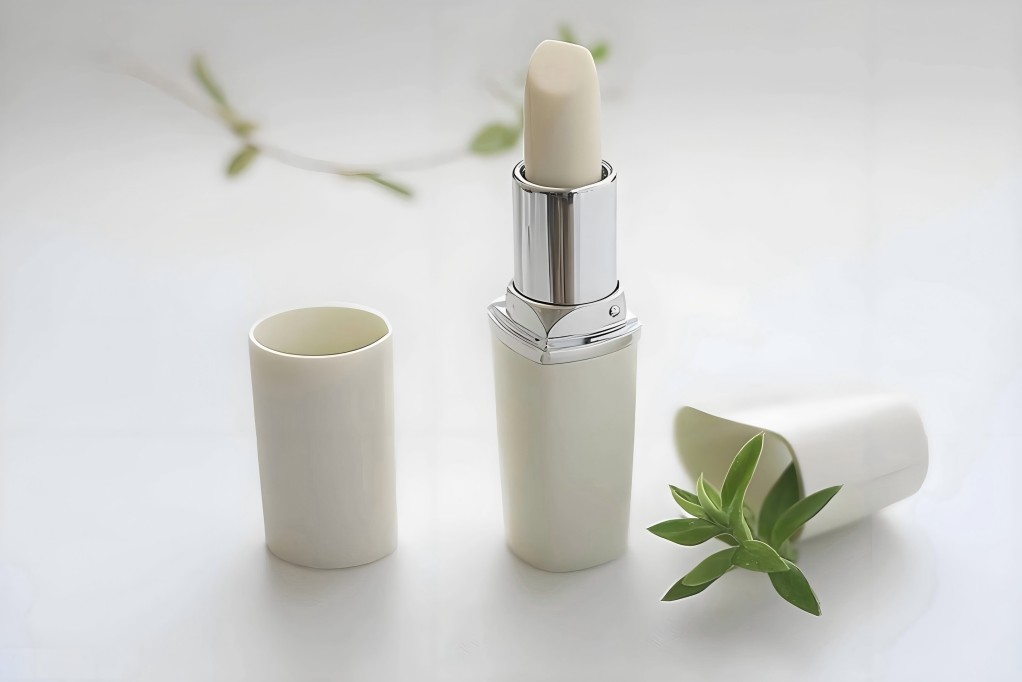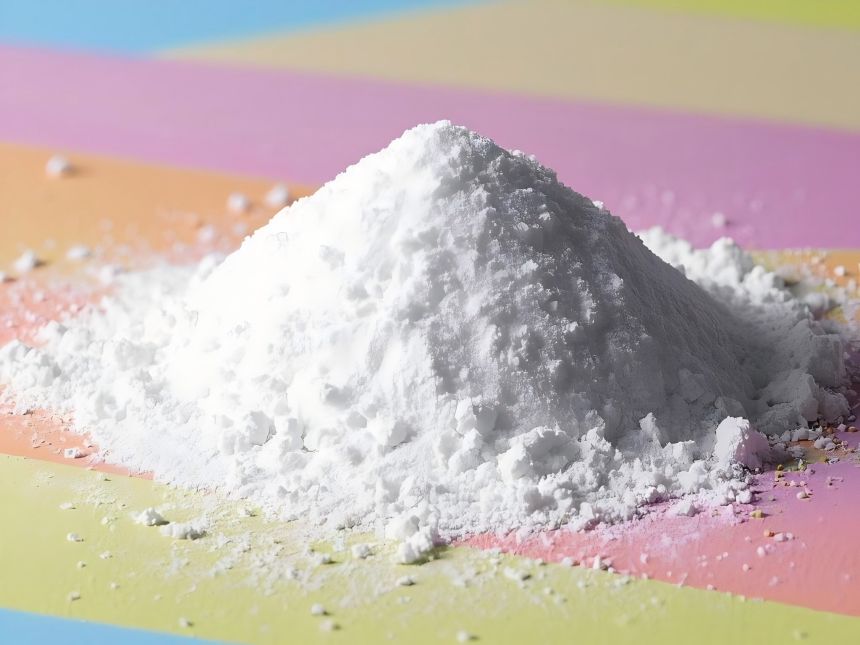What Is Octacosanol Extract?
1 Preface
Octacosanol, also known as montanol, is a bioactive substance widely found in nature. It has received extensive attention and research due to its special physiological effects. As a high-grade fatty alcohol, octacosanol is widely found in natural substances such as sugarcane wax, rice bran wax, beeswax and insect white wax. It is highly concentrated in sugarcane wax, rice bran wax and beeswax. For example, the content of octacosanol in total fatty alcohols in beeswax is 2.71% ~15.78%, making it highly valuable. Pure octacosanol appears as a white powder or scaly crystals, with a melting point of 81–83°C. It is insoluble in water but soluble in organic solvents such as ethanol. Octacosanol is stable in the presence of acids, alkalis and high temperatures, does not absorb moisture easily and is easy to store [8].
Animal experiments have shown that the acute oral LD50 of octacosanol in rats is 18,000 mg/kg, which is safer than table salt (the LD50 of table salt is 3,000 mg/kg) [9]. Therefore, naturally extracted octacosanol can be used as a safe, green additive. In 1937, it was found to have therapeutic effects on human reproductive disorders. Subsequently, researchers such as Dr. Cureton of the University of Illinois in the United States demonstrated that it has a series of unique physiological functions: 1) improves the body's endurance [1-2]; 2) reduces the body's stress response [3]; 3) reduces blood lipids and cholesterol in the body [4]; 4) other physiological functions [5-7]. Octacosanol also has the effect of preventing atherosclerosis, inhibiting gastric ulcers, preventing platelet aggregation, and protecting the liver. With the continuous in-depth study of octacosanol, the development of octacosanol-related products has gradually become another hot spot in domestic scientific research.
2 Production process of octacosanol
2.1 Preparation of octacosanol by chemical synthesis
In 1981, American scientist Parker [10] first used cyclododecanone as a raw material in the laboratory, and reacted it with a secondary amine such as morpholine to obtain enamine. Enamine reacts with an acid chloride in the presence of a binding acid to obtain l,3-dione, which is then opened under alkaline conditions to obtain keto acid. The keto acid is reduced by Wolff-Kishner to obtain a higher fatty acid, and finally reduced with BH3-Me2S to obtain octacosanol. Later, Feng Youjian et al. [11] based on this, first esterified the higher fatty acid to obtain a higher fatty acid ester, and finally reduced with lithium aluminum hydride or sodium-ethanol to obtain octacosanol, with a total yield of 52%.
In 2003, Cravotto [12] reported a method for synthesizing octacosanol. The method first oxidizes methyl 10-undecenoate to methyl 10-formylnonanoate, and then forms phosphorane lydide with bromooctadecane and triphenylphosphine in a Wittig reaction to form methyl unsaturated docosanoate, which is reduced to obtain docosanol, with a total yield of 53%.
In 2005, Georgios et al. [13] reported that the brominated n-decanol was protected and coupled with the octadecylmagnesium chloride Grignard reagent under the catalysis of lithium tetrachloropalladate, and finally deprotected to synthesize the octacosanol in three steps, with a total yield of 73% and a purity of 95%.
Some laboratories have synthesized octacosanol through multi-step reactions. For example, Yuan Shiming [14] used octadecanol and sebacic acid to react, and then underwent dehydration, hydrogenation, reduction and other reaction processes to finally synthesize octacosanol.
2.2 Preparation of octacosanol by natural extraction
The extraction of natural octacosanol mainly includes three steps: refining of wax, saponification reaction and purification of higher fatty alcohols. The main methods of refining wax include solvent extraction and supercritical fluid extraction; the main methods of saponification include ultrasonic hydrolysis, traditional hydrolysis and ester exchange; the purification of higher fatty alcohols is the main factor affecting the purity of octacosanol. Currently, there are recrystallization, high vacuum fractionation and molecular distillation.
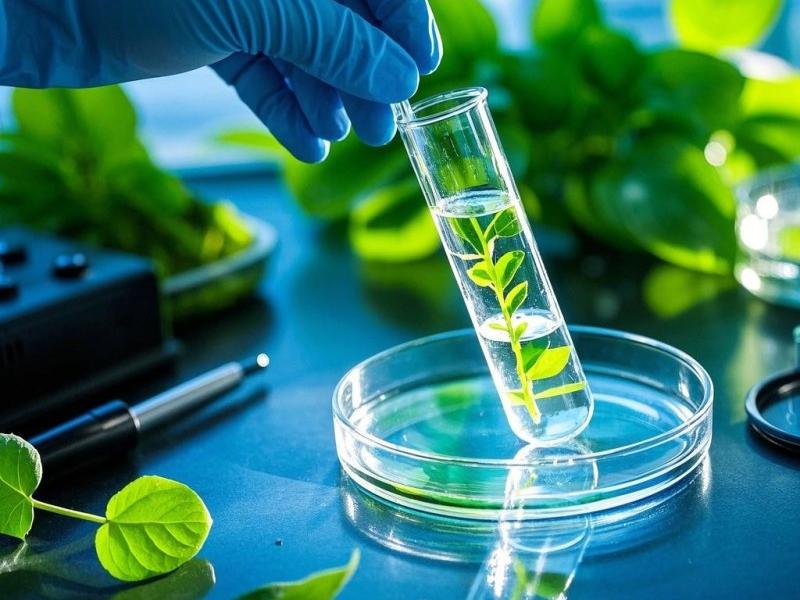
2.2.1 Recrystallization
The recrystallization method can only produce a mixture of higher fatty alcohols, rather than high-purity octacosanol. However, when used as a pharmaceutical or health food additive, a mixture of higher fatty alcohols generally meets the requirements. At present, the most pharmacologically tested is a mixture of higher primary fatty alcohols extracted from sugarcane wax.
Perez et al. [15] reported a method for isolating and purifying a mixture of higher fatty alcohols from saponified beeswax: the saponified beeswax was extracted with a large amount of organic solvents such as methanol, ethanol, acetone, chloroform, benzene, toluene or mixtures thereof for 3–7 h. The solvent-to-beeswax ratio during extraction was 4:1–8:1, cool the extraction phase to 2~15℃, crystallize the solid, repeatedly recrystallize the solid several times to obtain the final product, wherein the content of octacosanol is 30%~60%. This method uses a large amount of organic solvents such as ethanol, acetone, chloroform and benzene in the extraction process after saponification. It has the defects of complex process, long operation time and low yield. In particular, it consumes a large amount of organic solvents, which causes serious environmental pollution.
2.2.2 High vacuum fractional distillation method
Jiao Cai Shan et al. [16] carried out high vacuum fractional distillation under the conditions of a boiling point <240°C and a vacuum of 0.5×133.3 Pa after refining, saponification and separation of rice bran wax. The purity of octacosanol was only 22.5%, and the purity of the product of tricosanol was 93.8%.
2.2.3 Molecular distillation
Molecular distillation technology is different from general distillation technology. It has the characteristics of low operating temperature, low distillation pressure, short heating time, and high degree of separation. It provides a better separation method for the separation of materials with high boiling points, heat sensitivity, and oxidation, and can solve a large number of problems that cannot be solved by conventional distillation techniques.
Liu Fangbo et al. [17] used molecular distillation to separate and purify the active substance octacosanol from rice bran. Under the conditions of a temperature of 170 °C in the thin-film evaporator and a temperature of 210 °C in the molecular distiller, a product of octacosanol with a purity of 52.6% was obtained. Xu Songlin et al. [18] used saponified beeswax as a raw material, molecular distillation technology, and a short-path evaporator with a distance of 2–15 cm between the evaporation surface and the condensation surface, a pressure of 0.01–10 Pa, an evaporation temperature of 110–200°C, cooling temperature of -15~18℃, agitation speed of 10~1,000 rpm, and repeated distillation with the residue from the previous distillation as the raw material for the next distillation. Each distillation is maintained until the temperature difference between the evaporator and condenser is 30~100℃, and octacosanol with a purity of 60%~90% can be obtained. The advantage of molecular distillation is that the mixture of high-grade primary fatty alcohols obtained has a high octacosanol content. The separation and purification method is simple, has a high yield, and the process is environmentally friendly.
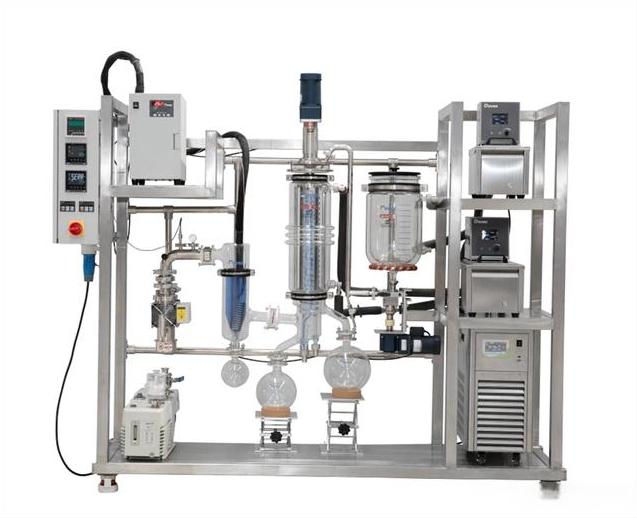
3 Current application status of octacosanol
Due to the significant physiological regulatory effects of octacosanol, it has been widely developed and applied in the international additive market in the fields of food, medicine, cosmetics, pharmaceuticals, feed additives, etc., with a value of several billion dollars. In the United States and Japan, octacosanol has been widely added to some high-end snacks, candy, chocolate, astronaut food, various high-end health foods, functional foods, and foods for special purposes. For example, high-energy drinks developed for high-energy needs, such as special drinks for cyclists and special drinks for military personnel training in highlands. Special processed foods for regulating high blood lipids, high blood pressure, and preventing and treating cardiovascular diseases [21].
In view of the various physiological functions of octacosanol, such as lowering blood lipids, lowering cholesterol, and improving the secretion of sex hormones in the body, octacosanol has become a hotspot in the development of lipid-lowering drugs. Commonly used western medicines such as lovastatin, simvastatin, pravastatin and other drugs must be taken for a long time, but prolonged use can cause patients to experience gastrointestinal discomfort, headaches, cholelithiasis, decreased fertility and other symptoms. Octacosanol can avoid the above discomforts and is suitable for the elderly and patients with impaired liver and kidney metabolism. It is safe and has low toxicity[22].
In addition, because octacosanol can effectively promote blood circulation in the skin and activate surface cells, as well as having anti-inflammatory and analgesic effects, it can prevent and treat skin diseases such as athlete's foot, eczema, itching, and acne. Cosmetics containing octacosanol have already been developed in Japan. Studies have also confirmed that adding a certain amount of octacosanol to animal feed can effectively reduce the emergency mortality rate of animal cubs during weaning and increase their growth performance.
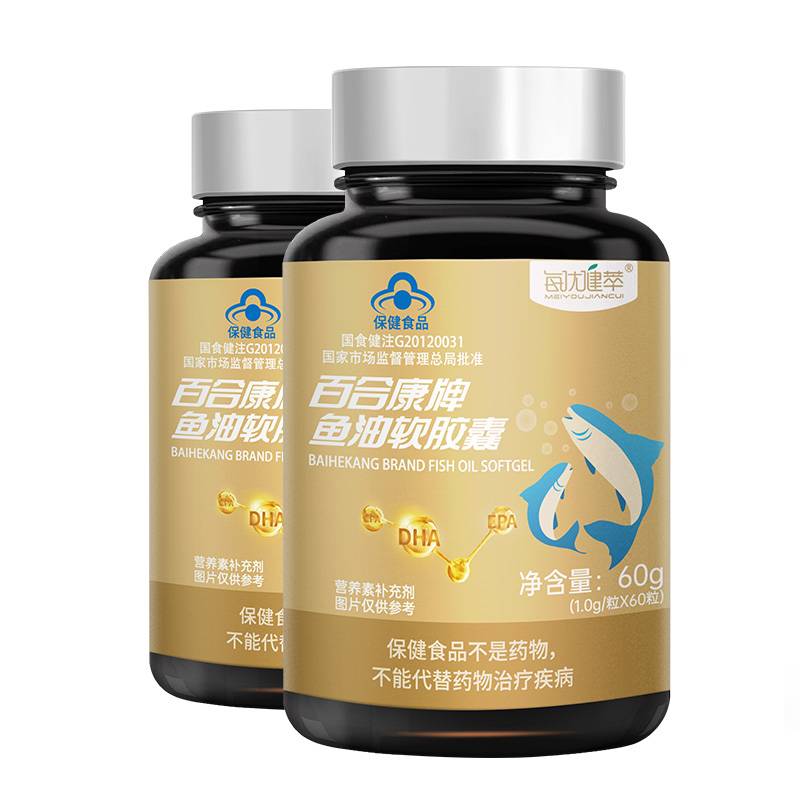
4 Outlook
At present, the process for preparing octacosanol is not fully mature, and there are relatively few products that meet the purity requirements of pharmaceutical and food grade additives. Therefore, more research is needed to optimize the preparation and purification processes. Research on its physiological functions has mainly focused on the lipid-lowering and cholesterol-lowering effects of octacosanol, while research on its physiological functions of combating fatigue, increasing physical strength and endurance is still in its infancy [23]. Octacosanol has a very broad range of applications and has great market potential. If we can make full use of China's abundant agricultural resources and the research results at home and abroad, and realize the industrialization of octacosanol products as soon as possible, we can reap a double harvest of social and economic benefits.
References:
[1] Cureton T K. Effects of wheat germ oil on human in exercise [M]. US: IIIinois, Charles Thomas Publishesr, 1972.
[2] Chen Fang. Extraction and purification of octacosanol from rice bran and its anti-fatigue function [D]. Beijing: China Agricultural University, 2003.
[3] Hui Jin. Preliminary study on the anti-hypoxia effect of octacosanol [D]. Chongqing: Third Military Medical University, 2007
[4] Cureton T K. Improvement in physical fitness associated with a course of US Navy Underwater Trainees, with and without dietary supplements (WGO and octacosanol) [J]. Res Quart, 1963, 34: 440-453.
[5] Zhong G, Wei Y. Study on the function of octacosanol-containing oil capsules in relieving physical fatigue and lowering blood lipids [J]. Chinese Journal of Cereals, Oils and Foodstuffs, 2006, 22(5): 89-92.
[6] Yi S, Zhang K, Hu C. Research progress on the pharmacological effects of polyglycerol [J]. International Journal of Pathology and Clinical Medicine, 2009, 29(4): 342-344.
[7] Taylor J C, Lisa R, Lockwood, et al. Octacosanol in human health [J]. Nutrition, 2003, 19(2): 192-195.
[8] Mao Jia, Chen Jianhua, Huang Shaolie. Research progress of octacosanol [J]. Guangdong Chemical Industry, 2007, 34 (3): 57-58.
[9] Pons P, Jimenez A, Rodrigues M, et al. Effects of policosanol in elderly hypercholesterolemic patients [J]. Curr Ther Res , 1993, 53 :265-269 .
[10] Parker D K. Method for synthesis of long -chain alcohols: US, 4367346[P]. 1982-04-23.
[11] Feng Youjian. A method for preparing a twenty-eight alcohol: China, 1861551[P]. 2006-11-15.
[12] Gianearlo C. A process for preparing long chain saturated or unsaturated oxygenated compounds: WO, 03106397 [P]. 2003-12-24.
[13] Georgios S. Process for the preparation of aliphatic primary alcohols and related intermediates in such process: WO, 2006042835A1 [P]. 2006-04-27.
[14] Yuan Shimin. Research on the synthesis of octacosanol [D]. Guangzhou: Sun Yat-sen University, 1994.
[15] Perez. High molecular weight primary aliphatic alcohols obtained from beeswax and pharmaceutical use thereof: US, 6225354 B1 [P]. 2001-05-01.
[16] Jiao C, Wang X. Extraction of octacosanol and triacontanol from rice bran wax and product analysis [J]. Chemical Engineer, 2002, 91(4): 14-15.
[17] Liu F, Wang X. Research on the separation of octacosanol, an active substance in rice bran, by molecular distillation [J]. China Oil and Fat , 2006 , 31 (11): 50-52.
[18] Xu Songlin. A mixture of high-grade primary fatty alcohols extracted from beeswax and a method for separating and purifying it: China, 1450041A [P]. 2003-10-22.
[19] Liu Fajin, Sun Dongmei. Determination of the content of two kinds of alkanols in beeswax total alkanols by GC method [J]. Shizhen Research on Traditional Chinese Medicine, 1998, 9(2): 128.
[20] Wang Suihua, Ye Fang. Determination of the content of beeswax and its capsules by capillary gas chromatography [J]. Traditional Chinese Medicine, 2001, 24 (10): 741-742.
[21] Zesheng. Research progress and application development of octacosanol [G] / / Proceedings of the International Symposium on Nutritional Fortifiers and Functional Food Ingredients and the 2006 Annual Meeting of the Association's Nutritional Fortifiers and Specialty Nutrition Food Committee, Tianze: China Food Additive Production and Application Industry Association, 2006.
[22] Guo Zhi, Xu Li. Natural high-grade alkanol mixture: a new cholesterol-lowering drug from sugarcane wax [J]. Foreign Medicine (Phytomedicine Supplement), 2001, 29(6): 231-236.
[23] Pons P, Mas R, Illnait J, et al. Efficacy and safety of policosanol in patients with primary hypercholes-terolemia [J]. Curr Ther Res, 1992, 51: 568-575.


 English
English French
French Spanish
Spanish Russian
Russian Korean
Korean Japanese
Japanese